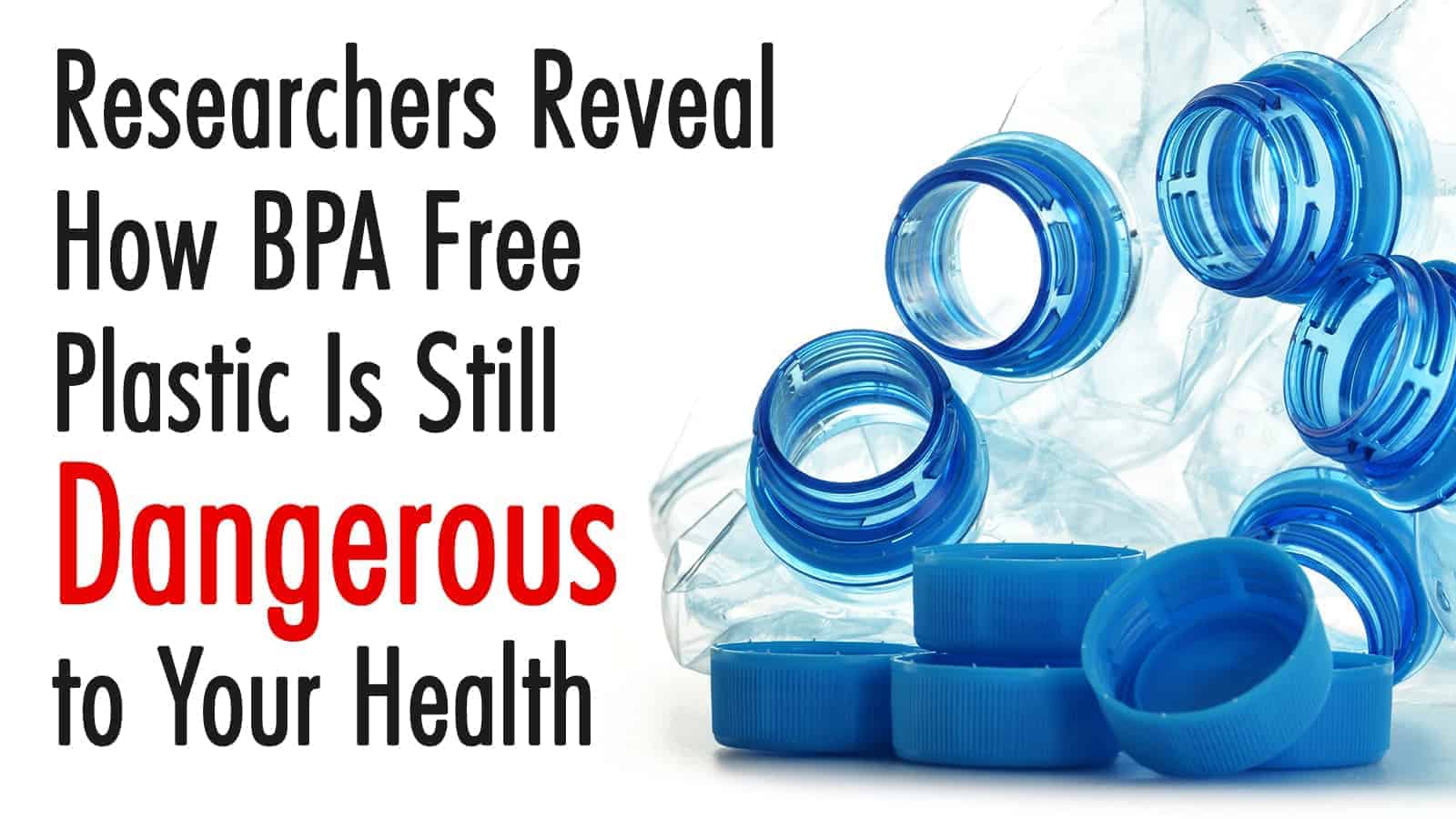It’s safe to say that most things worldwide are made from plastic. Looking at your surroundings right now, you’ll see many items fashioned from this material. Even if they only encompass a small part of something, they’re definitely noticeable and there.
With growing environmental concerns surrounding the use and disposal of plastic, experts around the world have been urging people to curb their plastic consumption. Medical researchers have also suggested that plastic could be bad for our health. Countless nations’ governments are even implementing laws that will ban some forms of plastic.
If all this isn’t enough to convince you that it’s time to search for more sustainable alternatives, listen up, because we’ve compiled even more reasons that you should be more mindful of plastic usage.
Scientists Explain 22 Reasons Why You Should Stop Using Plastic
Plastic in the Ocean
Shocking amounts of plastic find their way into the ocean due to littering, improper disposal, or even too-strong wind and weather. This means even plastic you try to dispose of correctly often still manages to get to the water, says clinical veterinarian, Doctor of Veterinary Medicine, and Master of Surgery Jennifer Flower.
Americans account for a whopping 380 million tons of plastic waste yearly, so it’s no surprise to imagine that even a tiny percentage of that could cause severe problems for the ocean. Here are some other ocean and marine-related reasons to stop using plastic.
1. The Amount Of Ocean Plastic Is Increasing
Not too long ago, the National Academy of Sciences reported that 0.1% of plastic produced internationally entered the oceans. This report was released in 1975; 40 years later, in 2015, more and more plastic builds up in waterways.
In fact, researchers estimated that up to a shocking 11 million metric tons of plastic waste finds its path to oceans all around the world from coastal nations; this number will likely only get higher in the upcoming years.
The same goes for microplastics, especially tiny beads, and components used in cosmetic products that get washed down the drain. Roughly 51 trillion of them slip through filters and into the water, meaning there are more microplastics in the ocean than stars in the Milky Way.
2. Our Water Supply Is Affected
The Great Lakes, five of the world’s most significant sources of fresh, surface-level water, are all becoming inundated by tons of plastic. These lakes are responsible for 21% of the water that animals and we use, but annually, a horrifying 22 million pounds of waste plastic enters these lakes.
3. It’s Reached New Depths
You might think plastic stays on the ocean surface – but it doesn’t. The plastic you see makes up only a small percentage of the full volume of waste in the water. Worse still, a plastic bag has managed to find its way to the deepest trench in the world – 10,898 meters deep.
4. Islands of Plastic Trash
A gigantic island of trash is in the middle of the Pacific Ocean, measuring 600,000 square miles and weighing in at 80,000 tons. It spans so much area that it’s double the size of the state of Texas, and it holds over 1.8 trillion plastic waste pieces. It is just one of five accumulation zones over the entire world.
5. Outnumbering Fish
It is predicted that, by the year 2050, if no changes are made to how we use and produce plastic, plastics will outnumber fish. It would be an understatement to say this is not an optimistic prediction, as it will likely cause hugely adverse effects on food sources.
6. Marine Life Pays The Price
Approximately 700 marine species have been negatively affected by ocean waste and debris, most of which is plastic. Straws and other similar items are often ingested, causing a digestive blockage.
In addition, plastic is laden with chemicals, and these toxins are released into the water. This can, then, make its way into marine life, slowly poisoning them and causing tissue damage and other serious issues. Additionally, many marine life gets tangled in plastic products such as nets and rope.
Microplastics are especially dangerous when it comes to ingestion – they’re so tiny that most people, let alone sea creatures, won’t be seen or noticed. Larger ones that find their way onto sand or water surfaces are easily mistaken for little bits of food.
7. Seabirds Are Equally Affected
Experts predict that if there are no changes in plastic use and consumption, 99% of all types of seabirds will have eaten plastic in some way by the time we reach 2050. Back in 2010, 80% of seabirds were found to have plastic in their stomachs – a huge jump from 1960’s mere 5%.
The Laysan Albatross faces even more harm than other species, especially young birds and chicks. Ninety percent of newly hatched Laysan Albatrosses will consume plastic at some point, potentially leading to early deaths due to malnourishment.
8. Plastic Is Killing Coral Reefs
Many of us love and enjoy the sight of coral reefs, but they, too, are dying. These ecosystems maintain life for the homes of 25% of life underwater; approximately 275 million individuals also depend on them as a source of income, food, or livelihood.
It was already difficult for these reefs to push through the difficulties of global warming and climate change. Now, 11.1 billion of these pieces of plastic are trapped in coral reefs across oceans and waterways in the Asia-Pacific region. This prevents these reefs from receiving the necessary light to grow and depriving them of oxygen.
The plastic also lets off bad chemicals that harm the coral reefs, causing all forms of unwanted microorganisms to take root.
BPA
Known as bisphenol A, BPA is a type of synthetic chemical compound commonly used in plastic production. This means it affects items within BPA-filled plastic, such as food, drinks, and other items. Worse still, it causes a variety of adverse effects on health. Here are some of them.
1. Hormones
BPA can negatively affect the body’s hormones, causing imbalances that lead to various issues. Typically, this leads to endocrine disorders, such as:
- Polycystic ovary syndrome
- Infertility
- Early puberty
- Prostate cancer
- Breast cancer
2. Weight Gain
Because BPA disrupts the body’s endocrine system, it can affect all the body’s hormones – including the ones that help keep the metabolism well-balanced. Evidence suggests that BPA is behind weight gain and a predisposition to weight gain in offspring – a big reason to stop using plastic.
3. Thyroid Issues
Once again, we’re discussing hormones here, specifically thyroid hormones. BPA consumption can also harm these hormones, potentially leading to conditions like Hashimoto’s disease. Fifty-two percent of individuals with thyroid antibody elevations have BPA levels beyond detection limits.
4. Diabetes
According to the US Endocrine Society, BPA is one of the many endocrine-disrupting chemicals that can increase the chances of developing type 2 diabetes.
5. Heart Disease
BPA may threaten the body’s arteries and heart, potentially leading to plaque or heartbeat abnormalities, known as atherosclerosis and arrhythmias, respectively. Research into the matter is still ongoing.
6. Irritable Bowel Disease (IBD)
Some research suggests a link between IPD and BPA. This may be due to how BPA causes the metabolism of amino acids to be affected by harming gut bacteria. In general, even without leading to IPD, BPA likely leads to a higher risk of colon inflammation.
7. High Blood Pressure
According to Registered Dietitian Nutritionists, Master of Surgery, and business-owner Megan Casper, those who drink from BPA-lined receptacles experience heightened blood pressure. Studies have found that this jump averages at 4.5 mm Hg.
8. Birth Issues
A recent study found a link between BPA and birth problems. There was a higher chance of miscarriage in those with higher BPA levels and a significantly larger risk of birth defects and chromosomal problems in the baby.
9. Babies and Children
Many of us use plastic containers to keep food, warm it up, and feed it to our kids, but according to the American Academy of Pediatrics, this is a huge no-no. BPA may be able to affect development and growth negatively and even boost the chances of childhood obesity.
10. Going BPA-Free Doesn’t Help
So you may be thinking the solution is simple! Just buy BPA-free plastics, right? Wrong. Ninety-five percent of supposedly BPA-free plastics also release endocrine-disrupting chemicals that can cause all these same problems. In all likelihood, all plastics pose the same risks; research has just been focusing so much on BPA that we’re unaware of the dangers of other plastics.
The Qualities of Plastic
Plastic has multiple qualities that make it an inexpensive product to purchase but also cause it to be dangerous. Ultimately, these elements provide more cons than pros overall. Here are some of these qualities:
1. Methane
A large majority of the regular plastics we use in our daily life release methane (a greenhouse gas), and ethylene (a hydrocarbon gas), if you set them out in the sunlight. This means that plastic actually contributes to greenhouse gas emissions, dampening the positive thinking we’ve had towards stalling climate change.
2. Plastic Dust
Did you know that plastic particles can be so microscopic that you don’t even know you’re consuming them? Known as plastic dust, this happens when synthetic fabrics and other similar items shed. They release tiny plastic bits that then combine with everyday dust. This dust may wind up on your plate during meals – and you won’t even notice. On average, people accidentally consume a shocking 68,415 fibers made from plastic in a single year.
3. No Such Thing As Biodegradable
Companies have attempted to make single-use plastics biodegradable and, therefore, more environmentally friendly. So far, however, this has not worked. Products claiming to be made from biodegradable plastic degrade no differently than normal plastics.
4. Plastic Never Goes Away
Since plastic first began production, we have produced 8.3 billion tons of the stuff; of that amount, we have produced 6.3 billion tons of waste, which still remains in this world.
Essentially, plastic doesn’t degrade, and it doesn’t go away. As a result, it is building up not just in landfills but everywhere around us. If this trend doesn’t change, in 2050, landfills will hold 12 billion tons of plastic waste.
Final Thoughts On Some Reasons Why You Should Stop Using Plastic
Removing all traces of plastic entirely from your life is likely nearly impossible for most people. But that doesn’t mean you can’t do your part to reduce your overall plastic usage. Use reusable shopping bags. Eliminate single-use plastics. Be more conscious of your purchases. There are countless ways to make a more plastic-free lifestyle work for you!
















 Community
Community

